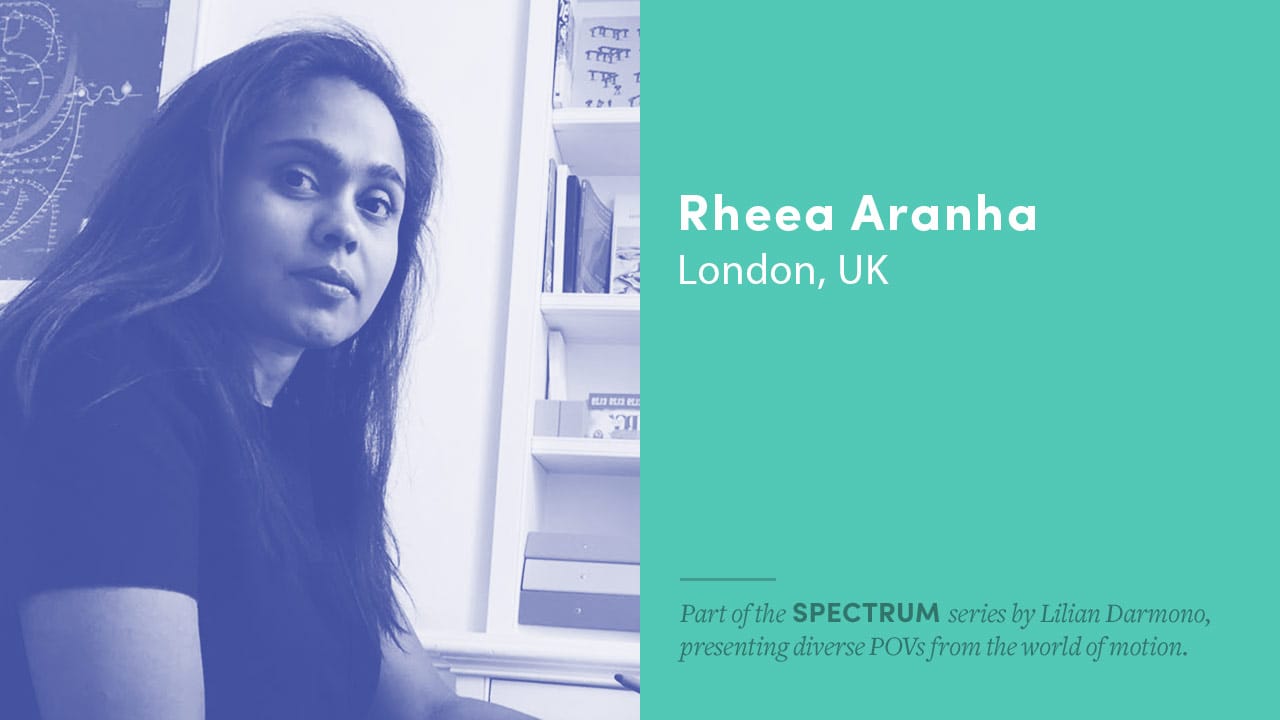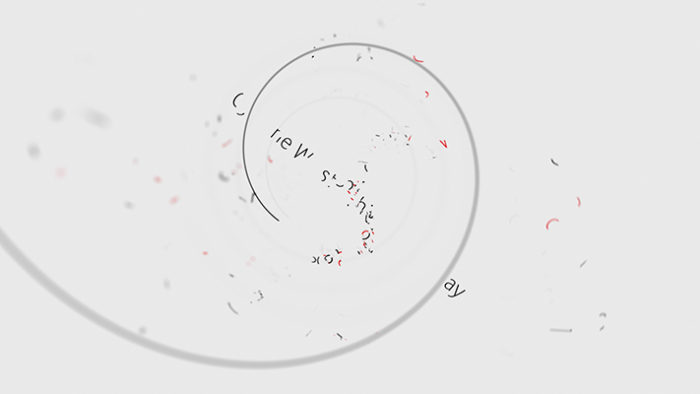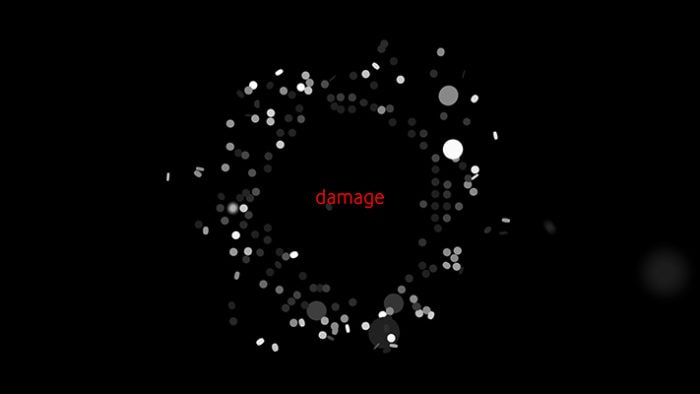SPECTRUM is an interview series by Lilian Darmono with members of the motion design and animation communities who have interesting and unusual perspectives to offer.
Guest name: Rheea Aranha
Born/raised: Mumbai, India
Current Location: London, UK
Age: 43

This issue of Spectrum, I spoke to Rheea Aranha, an Indian-born British creative director who co-founded Vincent with John Hill, a motion design company specialising in broadcast, branding and Film UI graphics.
Rheea was born and raised in Mumbai, India, in a Christian family – considered a minority group there. Her first Bachelor’s degree was in Mathematics and Economics, but she’s grown up drawing a lot, and have always had an interest in Art.
How it all began
Rheea had a collection of ‘Omnia’, a 70s Sci-Fi magazine, but it was MTV that got her interested in Motion.
She recalled, “1992 was when MTV India came on. That’s the biggest cultural eye opener as far as animation was concerned. I’d never seen claymation associated with a brand before! It was so beautiful. For me, stuff like that was what made a difference.”
On the relationship between her math background and design career, she didn’t think it was unusual.
“If you’re artistic, I think strangely, you can be very good at maths and numbers too”, she said. Considering her current work in Film UI, in which visual representation of data and information is very important, Rheea credits her math degree to be an advantage.
She explained,
“There are two kinds of UI work: pretty pictures on the wall or functional graphics that tell story beats. For instance, with ‘Prometheus’ [on which she worked collaboratively under George Simons with a number of other artists like Shaun Yue, David Sheldon-Hicks and her own business partner John Hill], the brief was very abstract and decorative.”
“The opposite of that would be a narrative-based UI, which is extraordinarily hard. We spent a lot of long nights reworking things. So much [of Film UI work] is about the director and what he/she wants to say through the UI. Sometimes, it’s all about real-life tech, telling stories, and finding key characters in the scripts. I’m very dyslexic. But I can formulate a brief and strip things back very quickly – such as interpreting dialogue into visual images, thanks to my background in math and stats.”
Film UI and gender roles
I asked her about the rarity of having female designers in the Film UI work, and if that affected the aesthetics of the final result. Rheea thinks it’s a hard one to quantify, as a lot of the aesthetics come out of technological restrictions, such as having to create things that are as high-contrast as possible (a lot of graphics have to be against black or dark backgrounds), so it would be easily readable in a short time, being affected by on-set lighting and camera set-ups.
Further to this she added, “When UI works exist, they tend to exist in the world of sci-fi or comics anyway, which is already very heavily gender-biased.” Chuckling, she observed, “Prometheus for instance, is filled with phallic symbols! So if that’s your starting point, then that energy is going to imbue the rest of the project, inevitably…”
But interestingly, she brought out Speed Racer as an example. Aesthetically, it’s very different than The Matrix trilogy, the previous films directed by the Wachowski siblings, and was created at the time Larry Wachowski was transitioning to become Lana. (The brothers have now become the Wachowski’s sisters, Lana and Lilly Wachowski.)
“I know a lot of it had to reference the original source, but it is still an interesting example of aesthetics that change as a person’s gender is shifting,” Rheea astutely pointed out.
Still from ‘Speed Racer’ (2008)’. Copyright Village Roadshow Pictures/Silver Pictures/Anarchos Productions/Warner Bros. PicturesFrom India to UK
Despite the current relevance of her background in mathematics, back when she started out, Rheea couldn’t see a career out of the degree, so she persuaded her parents to send her to the UK to study art and design. Not quite understanding how she could make a living out of art, her father (who believed in pushing his daughter’s education as much as his son’s) supported her decision.
“[My dad] had very strong views on how fragile things are for women in the workplace in India. He felt it’s very unsafe for women and didn’t see how I can have a prosperous career there.”
Rheea ended up at Kingston University’s Graphic Design program. She excelled so much so that when she ran out of funds after the first year, the faculty made her a fellow of The Royal Society of Art (RSA) so she could complete her degree for free. She then won the RSA award for International Students upon graduation, which led to a job offer at Kemistry, a motion design company in London.
She remembered how liberating it felt for her to have come to a relatively “colour-blind” London, where people would offer you a job based on your achievement, regardless of your gender and ethnicity – something she’s never experienced before she left India.
Change in perspective
Now that she’s been in this industry for 17 years, however, she has a more nuanced perspective on the situation.
“I acknowledge there’s a gender bias to a certain extent. Meritocracy exists but on the basis that you are going to have to work twice as hard and do twice as well [as a woman]. Once you break that glass ceiling there is undoubtedly an acknowledgement.“But once again there is always that moment, which I don’t think men will ever get — that there is an assumption that you know what you’re doing as you walk in the door, whereas for women, that isn’t there.”
On the topic of assumptions and biases, she elaborates: “I think there is predisposition to assume a woman in a creative meeting is not the director but the producer. I’ve lost count of the number of times I have been introduced as a producer, followed by a look of confusion. The initial faux pas is always recognised and then frantically and apologetically addressed, much to my amusement… ”
Advantage in being a minority?
“Being the unexpected person in the room is something you can use to your advantage.”
We then discussed the popular advice that women often get these days to better their career: to lean in, to be assertive and to not use weak language. Having been in the game for a long time and having been a creative director, Rheea’s perspective is quite interesting.
She feels the most effective way for a woman to get an idea approved in meetings is to be subtle, instead of adopting the ‘all-guns-blazing’ approach. Based on her own personal experience, she used to employ the latter technique, often getting shot down immediately. Over a period of ten years, she gradually realised that the former works much better, and now she keeps her best ideas until the last moments of a meeting.
“I’ve never heard a woman come into a meeting and say ‘I’ve got this brilliant idea! This is going to work!’ Only men have ever said that. Women slip their ideas onto the table and get a sense of whether people are with them. Then they move the conversation to a resolution.”
She also observed that with some male clients she needs to make them think the end result was their idea in the first place, something she noted she’s never had to do with female clients.

 Stills from Vodafone Typographic Commercial, Copyright Vincent 2016
Stills from Vodafone Typographic Commercial, Copyright Vincent 2016
On being a good leader
Rheea still believes that being assertive is good for women, but in her experience, it needs to be applied judiciously, based on what level you’re at in your career, regardless of gender. In her opinion, it’s more important to be assertive when you’re at the start of your career, to prove yourself. But once you’re in a senior position, you’ll be working with a smaller pool of talent. Giving space for others to voice their opinion would be more of a priority, as it facilitates a good collaborative environment and better end results.
Speaking of facilitating other people’s creative contribution, as a creative director, she makes it a priority to take junior designers to client meetings. Often these young designers haven’t yet developed assertiveness and confidence to ask for a higher level of involvement.
“In my case,” she said, “they tended to be women, juniors who haven’t been to any meetings despite having done good work on the project.”
At Vincent, John and Rheea sometimes take on people with little or no professional experience. Rheea described that one such talent approached them at the right time, when there was an appropriate brief in the studio, with a willingness to try anything.
“You have to recognise other people’s abilities and give them a chance. It’s exciting to come across people who surprise you. Someone who comes in and make you feel excited about design again after 17 years.”
However, that confidence and enthusiasm needs to be tempered with humility as well. To her, personality and hard work can be just as important as someone’s résumé. Rheea believes that it’s important for fresh graduates to recognise that it takes years to build the skill and talent necessary to work on high-profile feature films projects
Helping new talent get in the door
I asked her how Vincent operates when taking on people with less experience. Rheea explains, “You factor in their inexperience by not counting on them. Even if they fail, you can still pick up the pieces.The given is they don’t know what they’re doing. And if they do, that’d be the thing that surprises you.”
She gives inexperienced talent a stipend rather than a normal day rate, adopting an apprenticeship model. This is something she feels to be particularly important to help young people break into the business. The government could do a lot to help studios embrace this by giving out subsidies and simplifying the red tape around funding.
She recalled her own experience, crediting Graham McCallum, the creative director at Kemistry as instrumental in giving her a solid foundation to be a good designer.
“That first year is so crucial for being able to fail massively at what you do. The learning curve is so steep, especially for motion graphics. You’re learning outputting software, colour spectrum, etc. On top of that, you have to be creative, and answer briefs and win pitches. You just have to accept that people aren’t going to perform.”
In Graham’s case, he ‘ignored’ her that entire first year (“but in a good way!”) allowing Rheea to make mistakes and experiment.
 Still from BBC 2 idents project, Copyright Vincent 2016
Still from BBC 2 idents project, Copyright Vincent 2016
On gender issues in the industry
After that initial stage, based on her experience, gender starts to factor into the state of play. She explained that a lot of it has to do with gender-based assumptions, where the default position is that men know their [technical] stuff and women don’t.
So often women are afraid of asking questions, as it creates the impression that they’re less capable than their male colleagues, a sign of ‘weakness.’ Rheea said, “Being a woman, it’s intimidating, because often you are surrounded by white straight men in a room who probably know After Effects just as much as you do, but are more comfortable asking for help.”
I asked her if it ever was an issue that she didn’t find many female role models within animation and motion design. She said no, as she’s an advocate of looking outside the field for inspiration.
“I find general knowledge outside the arts is hugely helpful when working on briefs and most likely where I get my inspiration. I think you have to look outside the world of motion graphics if you want a long career.”
What about self-promotion? I asked Rheea why women designers don’t seem to be as easily spotted or visible in the scene. Are we just bad at promoting ourselves?
“I do genuinely think that women and men — the way we approach things are different, and we just have to accept that. Promoting the strength of a man’s work is easier as it’s tangible. Like i can make a swirly, artsy, cool C4D thing, and post that with #C4D or #awesome. But the way women work is a lot more instinctive and a lot more problem-solving, and a lot more collaborative, and bigger, and it’s very difficult to articulate that sometimes.”
On parenthood
Going deeper into women’s position in the industry, we tackled the issue of parenthood. Admittedly it’s mothers rather than fathers who are more at a disadvantage, as women are the ones getting pregnant. Rheea observes that it’s hard enough for women to be thought of as the best creative person in the room and this is especially true if you happen to be pregnant.
“People think your brain is creatively addled!” she said.
It’s a popular opinion out there that women who are pregnant are absent minded, less productive and capable. Rheea argues:
“Pregnant women probably work harder than others, because you have this huge deadline. You’re working twice as hard, trying to prove that you can get it all done. Saying a woman cannot do their job when they’re pregnant, that’s absolute nonsense. Yes you’re physically more tired, but it doesn’t diminish your creative ability at all.”
She admits that certain adjustments need to be made to accommodate parenthood, and I personally feel this advice applies regardless of your gender. She reiterates, “The misconception comes because the style in which you work [as a parent] is different. You have to structure things differently. You can’t work five days a week at an office full time. You have to work remotely more.
“But the final output is the same. That’s what causes nervousness and lack of faith. People forget you work from home from 7pm to 10 pm, even if you have to leave at 4.30pm to pick up your child from daycare.”
Rheea credits her solid team of creatives at Vincent as a helpful factor that allowed her to juggle parenthood and work. After being a full-time mum for the first 10 months of her daughter’s life, she overcame the emotional hurdle of entrusting her daughter to a nursery. It was difficult, but this allowed her to return to work at the studio, making her feel more or less like her old self again, which was important for keeping her sanity and making her feel like she could be a better parent. She now works four days a week at the office.
Asked what her future ambitions for herself and for Vincent are, she replied that she’s not the kind of person who puts goal markers in her future. She prefers to take opportunities as they come.
Currently, she is working with ‘Into Film’, part of the British Film Institute, giving young students a better understanding of the role of visual effects in the film industry. She also notices how her passion in science has rekindled, so doing motion projects that supports the field is particularly exciting for her, such as this visualisation of bronze-age huts to support the findings of an archeological dig in the UK (image below).
 Still from ‘Britain’s Pompeii’ project, Copyright Vincent 2016
Still from ‘Britain’s Pompeii’ project, Copyright Vincent 2016
On the meaning of success
Success to Rheea is being asked to do great projects based on your existing portfolio. “I see it in a very simple way: if someone calls me and says, ‘I’ve got this great brief and I want you to work on it.’ It’s not a pitch, they know who you are and think you do a great job… for me that’s a measure of success!”







